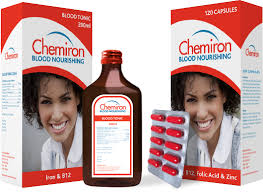A normal period (or normal menstruation) is different for every woman. Each month, one of your ovaries releases an egg. Meanwhile, your uterus gets ready to help your baby grow if that egg gets fertilized. If it does, you’re pregnant. If it doesn’t, your body sheds the lining of your uterus through your vagina. That’s your period. It happens on average, every 28 days.
Think about how old you were when you got your first period. Now think about how old you may be when you enter menopause. Your body and life will change a lot from one to the other, right? So does your menstrual cycle.
When it comes to periods, “normal” covers a lot of ground. Use the broad range of factors below as a guide. And remember: The only true normal is what’s normal for you.
Normal Period Timing
Every month, your entire body prepares to get pregnant. Your ovaries release an egg. Hormones rise and fall. This is your menstrual cycle. It starts on the first day of your last period and ends on the first day of your next period. Though the average cycle is 28 days long, anything between 21 and 45 days is considered normal. That’s a 24-day difference.
For the first year or two after menstruation begins, women tend to have longer cycles that don’t start at the same time every month. Older women often have shorter, more consistent cycles.
If you’re on birth control pills or have an IUD, it can change the timing of your period. Ask your doctor what’s normal for your form of contraception.
How long your period lasts also varies, the time from the first sign of blood to the last is usually in the 3-to-5-day range. Any length from 2 days to a week is normal for a period.
Normal Period Flow
If the egg your ovary releases every month isn’t fertilized, the lining of your uterus sheds through your vagina. This is your period. The amount of blood that comes out of your body is called your menstrual flow.
How does my menstrual cycle change as I get older?
Your cycles may change in different ways as you get older. Often, periods are heavier when you are younger (in your teens) and usually get lighter in your 20s and 30s. This is normal.
For a few years after your first period, menstrual cycles longer than 38 days are common. Girls usually get more regular cycles within three years of starting their periods. If longer or irregular cycles last beyond that, see your doctor or nurse to rule out a health problem, such as polycystic ovary syndrome (PCOS).
In your 20s and 30s, your cycles are usually regular and can last anywhere from 24 to 38 days.
In your 40s, as your body starts the transition to menopause, your cycles might become irregular. Your menstrual periods might stop for a month or a few months and then start again. They also might be shorter or last longer than usual, or be lighter or heavier than normal.
Talk to your doctor or nurse if you have menstrual cycles that are longer than 38 days or shorter than 24 days, or if you are worried about your menstrual cycle.
Can I Take Blood Tonic During Menstruation?
A blood tonic is a supplement that may be consumed as a means to produce more blood cells within the body. The exact recipe for such tonics may vary widely, but frequently contain iron, plus a variety of vitamins. During a woman’s years of menstruation, iron needs are a special nutritional concern. On average, women lose about ¼ cup of blood at each menstrual cycle; women with a heavier flow may even lose more. Since iron travels through the blood, some of it is lost with the loss of blood.
Women of childbearing age have an RDA of 15 mg per day for iron, which doubles with pregnancy. Women over fifty-one have a lower RDA of 10 mg per day, because most of them have reached menopause and are no longer losing blood (and therefore iron) each month.
It is common for women of childbearing age to become iron deficient. A deficiency of iron can cause symptoms that include fatigue and weakness. Deficiency can also lead to anemia. The combination of iron lost through the menstrual cycle, a low dietary intake of iron, frequent dieting, and a low intake of vitamin C all contribute to the problem of iron deficiency.
It is helpful not only to eat iron-rich foods, but also to take a multivitamin supplement that contains iron. Many blood tonic contain iron and are designed for women with that in mind. However, it is a good idea to check your supplement to make sure it contains iron.
ALERT! If you take both an iron and a calcium supplement, take them separately, at different times of the day. They will both be better absorbed if taken on their own.
Iron can be found in both animal products and plant sources, but the iron from meat is better absorbed than that in plant foods. Certain nutrients, such as vitamin C, can help enhance the absorption of iron from plant sources. So you can increase the amount of iron the body can use from iron-containing plant foods by, for example, drinking a glass of orange juice. Good sources of iron include meat, poultry, fish, fortified cereal, enriched rice, and legumes. SEE: Best Blood Tonic For Weight Gain





